Is It Safe for My Baby to Sleep Face Down?
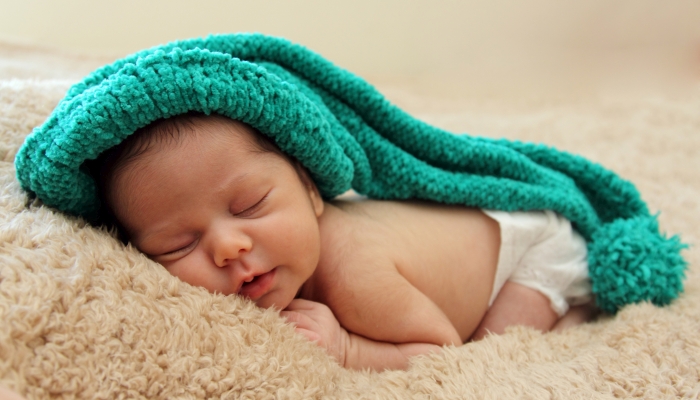
- It’s instinctual for a baby to want to sleep on their stomach.
- The American Academy of Pediatrics recommends babies sleep on their back until they are 12 months old.
- The AAP says if you consistently see your baby rolling from back to tummy and tummy to back, there is no need to continue trying to flip them on their back.
When you bring your new baby home from the hospital, you are likely to be surrounded by lots of advice and opinions from well-meaning friends and family.
Your grandma might remind you to never wake a sleeping baby. Your neighbor might urge you to only use a certain bottle in order to prevent gas. Your mom might tell you to put grape jelly on the pacifier for colic.
It can be overwhelming and difficult to know which advice to follow!
One area you’ll likely hear lots of conflicting opinions on is infant sleep. Your doctor will say to put the infant to sleep on their back. Yet your mom might swear that you slept better as a baby on your tummy.
What do you do?
We’re here to clear up any confusion on safe sleep recommendations for your infant. We’ve done the research. If you’ve seen your baby sleeping face down, and are wondering if it’s okay, here are the facts you should know!
Why Do Babies Want To Sleep Face Down?
We’d like to start by clarifying that when we say “baby sleeping face down”, we don’t mean that the baby is sleeping directly on their face. What we mean is that the baby is sleeping on their stomach instead of their back. A baby should never, under any circumstances, sleep directly on their face due to suffocation risks.
It’s instinctual for a baby to want to sleep on their stomach. This position often feels more natural and snug to them. It also helps reduce the startle reflex, which is why some parents often try it out of desperation when their baby won’t sleep.
This natural urge most babies have to sleep on their stomachs can be hard to break. Some parents find their older babies trying to flip to their tummies even when laid on their back.
When Can Babies Sleep on Their Stomach Safely?
There is good news for those infants who are determined to sleep in a face-down position. The American Academy of Pediatrics recommends babies only sleep on their back until they are 12 months old. After that, it’s safe for your little one to change their sleep position to tummy sleeping.
That’s because of the limited risk for Sudden Infant Death Syndrome after one year of age. Researchers aren’t completely sure what causes Sudden Infant Death Syndrome and why it drops off at this age. However, we do know that babies over 12 months old aren’t at great risk for suffocation in the mattress.
Also, the AAP says if you consistently see your baby rolling from back to tummy and tummy to back, there is no need to continue trying to flip them on their back. At this point, they are safe to sleep on their tummies. They can easily flip over if needed.
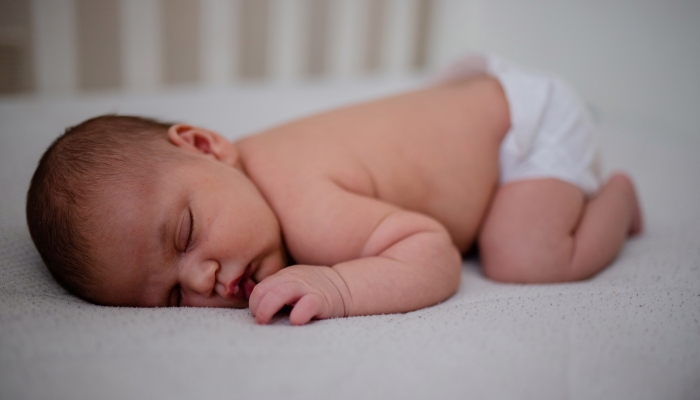
What Are the Official Recommendations for Baby Sleep Positioning?
If you were born before 1992, chances are you were put down to sleep on your stomach. This was the recommendation at the time to help decrease the risk of SIDS. (Hence why your mom swears by this method.)
However, in 1992 the AAP released a new recommendation that babies should now be put down to sleep on their backs to decrease the risk of Sudden Infant Death Syndrome. Along with this recommendation came a new list of research-backed do’s and don’ts for new parents.
Following these research-backed recommendations will ensure a safe sleep environment.
We know these guidelines might seem like an inconvenience to parents. Especially if your infant sleeps on their tummy. However, safe sleep is crucial to reducing the risk of SIDS.
These recommendations include:
1. Empty Crib
We know, those cute bumper pads, stuffed animals, and crib blankets are tempting to put in the crib. However, these increase the risk of SIDS as they provide an opportunity for suffocation. When you put your baby to sleep, the crib should be free of loose blankets, soft toys, crib bumpers, or other soft objects.
It is okay to have a pacifier in the crib. Many parents do this so that their babies can find it in the middle of the night and put themselves back to sleep. Other than that, all your baby needs in their crib is a mattress approved for infants and a tight-fitting crib sheet.
2. Baby on Back
Starting at birth, babies should be placed on their backs to sleep. Swaddling your baby is a good way to reduce the startle reflex without letting your baby sleep on their tummy. As soon as your baby rolls over for the first time, you should stop using a swaddle.
If your baby has trouble falling asleep on their back, there are many sleep training methods you can try. Don’t let your baby sleep face down just to try and improve sleep quality. This will put them at high risk for suffocation.
3. Dress Baby Appropriately
Overheating is another danger for infants. Many parents worry that their infant might get cold at night. But overdressing your baby can increase their body temperature to a dangerous temperature.
Refrain from dressing your baby for sleep in multiple layers or using blankets in their crib.To be sure your baby doesn’t overheat, only dress your baby in one more layer than what you are comfortable wearing to bed that night.
Wearable blankets are a great alternative to regular blankets. They often come in varying thicknesses. This will keep your baby just the right temperature without any worry of harm.
4. Don’t Co-Sleep
It might be tempting to put your baby in the bed with you. Especially if it’s been a long night of no sleep. But co-sleeping with your baby in bed isn’t safe.
If your baby sleeps in the bed with you and your spouse, the risk for suffocation is increased. Parents can accidentally roll over on their children. Your baby’s face can also become trapped in pillows or blankets.
Keep your baby’s health your number one priority and reduce SIDS risk by letting your baby sleep in their crib or bassinet.
As an alternative, there are products that exist to keep baby close to you as you sleep. Many bedside bassinets have removable sides that drop down. This makes you feel near your baby while keeping them safe.
5. Don’t Use Car Seats for Sleep
If your baby sleeps in the car seat when not in the car, this may put them at a higher suffocation risk. This is due to the position of their heads when the car seat is placed on the floor. As they sleep, their head might drop forward, cutting off their airway.
If your baby falls asleep in the car, that’s okay. Just transfer them into their bed when you arrive home. Don’t allow them to keep napping in the car seat at friends’ houses, restaurants, etc.
This also applies to swings, bouncer seats, and other baby seats. The only safe place for a baby to sleep is in their bed.
How To Stop Your Baby From Sleeping Face Down
Some parents are alarmed when they find their baby sleeping face down after they’ve put them on their back. If your baby sleeps face down but knows how to roll from front to back, they are okay. You likely won’t be able to keep them from rolling back and forth through the night anyways!
Some babies sleep face down from habit. There are things you can do to start transitioning your baby’s sleeping position to their back.
1. Try Sleep Training
There are several methods of sleep training that can help if your baby prefers a tummy sleeping position. Teaching them to fall asleep without lying face down might be tricky. However, using sleep training can speed up the process.
Some parents prefer no-cry sleep training methods like gentle sleep training, the pick up put down method, or chair method sleep training. These generally take longer to work but eliminate most of the crying. Faster methods include the Ferber method or the fading method.
Whatever training method you choose, know that consistency is key. Keep trying and know that you are doing what’s best for your baby.
2. Swaddle Your Baby
If your baby is not yet rolling onto their tummy, you can swaddle them to recreate the comfort they had sleeping face down. Many babies prefer the face-down sleeping position because it feels cozy. A swaddle will wrap them snuggly while they sleep on their backs.
3. Provide Tummy Time
When your baby develops their muscles for rolling from both back and front, they will be able to safely sleep on their tummy. You can help them develop these muscles by laying them on their stomach during the day for playtime. This will allow them to lift their head and practice rolling over.
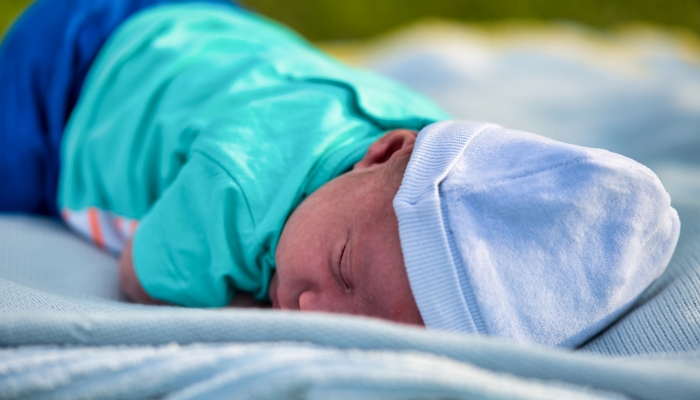
FAQs
Does sleeping on their back make a baby’s head flat?
Many parents worry that their baby will develop flat head syndrome from lying on their back. The truth is some babies do develop flat heads from staying in one position too long overtime.
Babies have soft skulls, so their heads are moldable. When babies spend too much time lying on their backs, the back of their head can look flattened. This is called positional plagiocephaly.
The good news is this usually corrects itself as your baby grows and starts to spend more time sitting up and crawling. Only in some cases will the baby need to wear a special helmet to correct the shape of their head.
If you notice your baby sleeping with their head in the same position, there are things you can try.
First, try changing their sleeping positions every night. Many babies turn their heads in the direction of what’s most interesting such as a mobile or night light. Try laying them facing in different directions each night so they will turn their head a different way.
Second, babies should have plenty of tummy time during the day to counteract back sleeping. This also prepares their neck muscles for sleeping face down when they can roll back and forth. Tummy time for 10 minutes at a time, 3 times a day is ideal.
Is it okay for my baby to sleep on their side?
No. Babies who sleep on their sides have an increased risk of SIDS. The only safe sleep position for infants is on their backs.
What are other risk factors for SIDS?
Researchers suggest there are several factors that increase SIDS risks in babies. These include:
- Lying face down to sleep.
- Sleeping on soft surfaces not designed for infant sleep (This includes adult mattresses, couches, air mattresses, or chairs. Babies should only sleep on a firm mattress that is approved for infants.)
- Sleeping with loose blankets (These can easily become entangled around the baby’s face or neck. Babies might also bury their faces into loose bedding if they flip over to sleep facing down.)
- Overheating during sleep (Too many layers is often the culprit of overheating. If you notice your baby sweating or that their chest feels hot, remove layers and cool your baby immediately.)
- Exposure to cigarette smoke during pregnancy or after birth (This increases the risk for bacterial or viral infections, and deprives the infant of oxygen.)
- Co-sleeping with parents.
- Research released in 2022 found that infants with low levels of the enzyme BChE were much more likely to succumb to SIDS.
Are there any other ways to reduce my baby’s risk for SIDS?
There are several things you can do to reduce your baby’s risk for SIDS. These include:
- Breastfeeding your baby
- Sleeping on a firm mattress
- Not smoking around your baby
- Avoiding alcohol and drugs during pregnancy
- Offering your baby a pacifier at bedtime and naptime
- Vaccinating your baby according to the recommended schedule
- Having your baby sleep in the same room as you (but not the same bed)
By following these tips, you can help keep your baby safe.
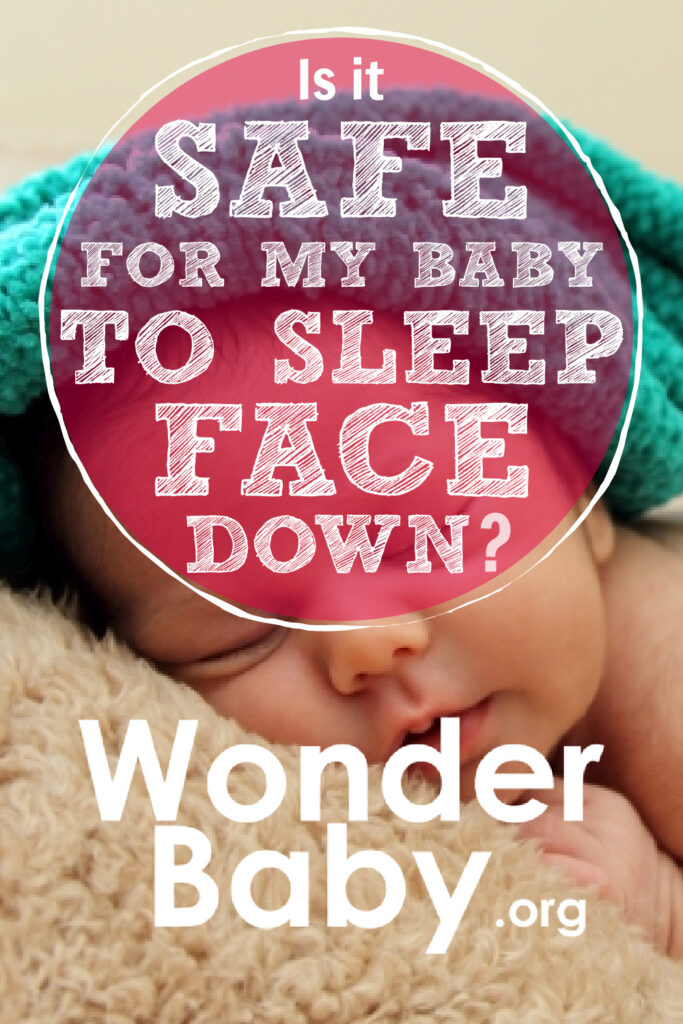
Related Posts
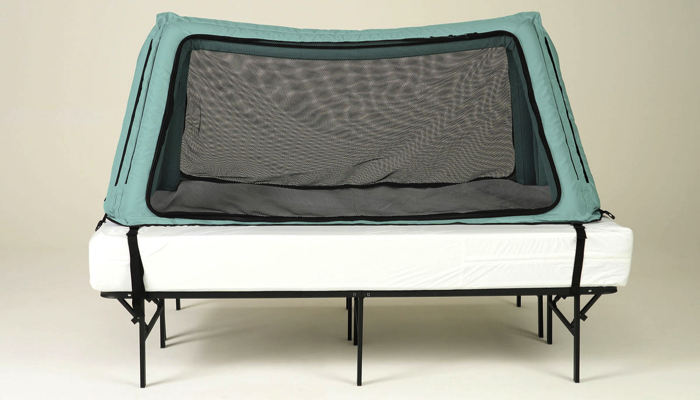
Sleep, Special Needs
Safe Place Bedding Travel Bed Review
Traveling with a special needs child can be stressful! Having a safe, durable, and easy to use travel bed can make traveling so much easier!
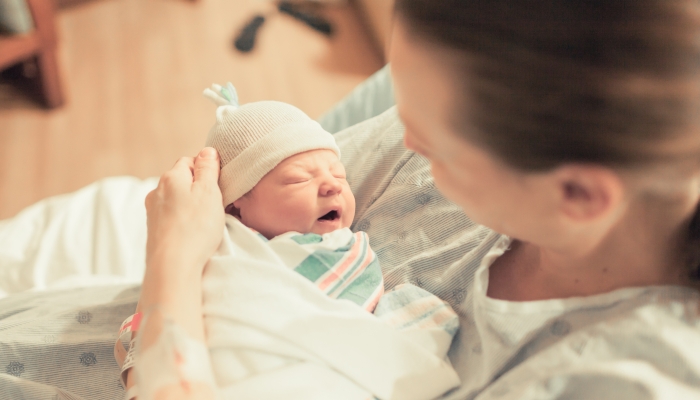
Sleep, Special Needs
Sleep Regimen for Premature Babies: Special Considerations
It can take premature babies much longer than their full-term peers to sleep for long stretches. A preemie sleep schedule may encourage better sleep.
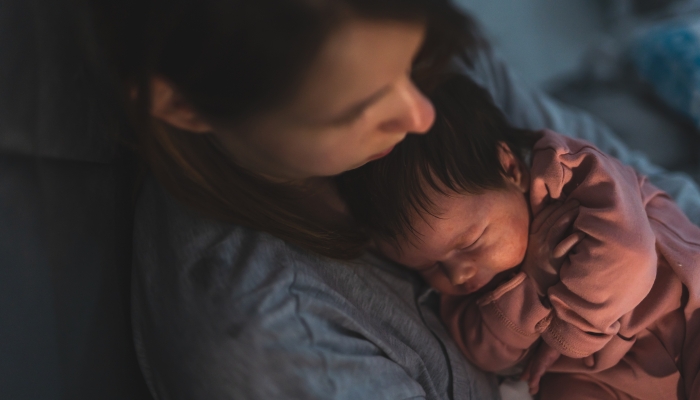
Sleep
Mastering the Bedtime Routine: 3 Tips for a Peaceful Night’s Sleep
From around six weeks, a newborn bedtime routine can help your baby learn the difference between day and night and prepare for a restful night’s sleep.